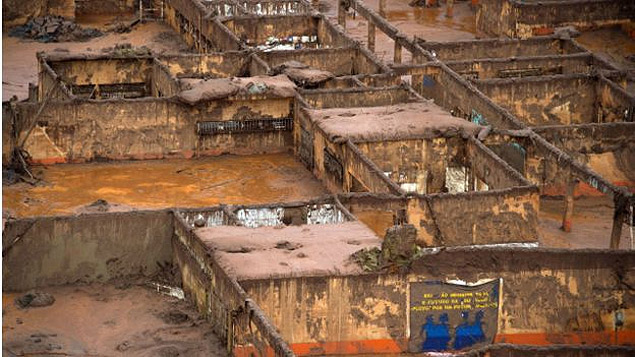Latest Photo Galleries
Brazilian Markets
17h29 Bovespa |
+0,65% | 127.352 |
16h43 Gold |
0,00% | 117 |
17h00 Dollar |
0,00% | 5,1151 |
16h30 Euro |
+0,49% | 2,65250 |
ADVERTISING
Rivers Contaminated with Waste from Mining Company Samarco Are in Poor Condition, Says NGO
11/08/2017 - 14h02
Advertising
CAROLINA LINHARES
FROM BELO HORIZONTE
A report conducted by the SOS Mata Atlântica Foundation that was released on Tuesday (the 7th) found that contamination levels of the waters in the Doce river basin were either elevated or dire in 90% of the stretches that were analyzed.
Two years after the collapse of the Fundão dam in Mariana, Minas Gerais, the assessments that were made between the 11th and the 20th of October indicate that, after a period of improvements made from 2015 to 2016, contamination levels have once again deteriorated.
| BBC/AFP | ||
 |
||
| The collapse of the dam that was operated by mining company Samarco led to the deaths of 19 people |
The collapse of the dam that was operated by mining company Samarco (which is owned by Vale and BHP Billiton) led to the deaths of 19 people and unleashed waste that spread from the state of Minas Gerais to the Espírito Santo sea - totalling 650 kilometers.
According to the report, the heat and the drought combined made it harder to decant mineral waste. Even though the waste wasn't itself toxic, it did manage to unbury heavy metals from the riverbeds, which, in turn, contaminated the waters.
The Renova Foundation - which was created by mining companies in order to restore areas that were damaged following the collapse of the dam - is planning on leaving waste untouched in areas where handling the waste in order to remove it could lead to further turbidity and cause greater damages as opposed to decantation. The foundation stated that "the waters of the Doce River are drinkable as long as they have been treated by the concessionaires in question (SAAE and Copasa)".
Translated by THOMAS MATHEWSON



